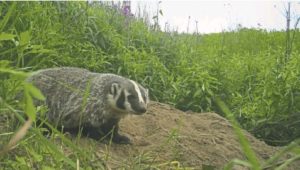‘Increased efficiencies’ to undermine cornerstones of Ontario’s Endangered Species Act

The Kirtland’s Warbler is among more than 200 species of plants and animals listed at risk of disappearing from Ontario. In 2017, Simcoe County undertook a restoration project to create Kirtland’s Warbler habitat.
From Anne Bell, Director of Conservation and Education, Ontario Nature
Under the guise of “enabling positive outcomes for species at risk” the Ontario Ministry of Environment, Conservation and Parks (MECP) is reviewing the Endangered Species Act, 2007 (ESA).
Allegedly responding to criticisms that the ESA is administratively burdensome and creates “barriers to economic development,” the government’s discussion paper is closely aligned with its broader “open-for-business” approach to governance.
Make no mistake: the ministry is inviting the public to consider options that, if passed, would undermine the very cornerstones of the law: science-based listing that includes Indigenous Traditional Knowledge, mandatory habitat protection, and legislated timelines for planning and reporting. Essentially the critical measures that enable positive outcomes for species at risk.
Proposals to “increase efficiencies” and “streamline processes” include:
-Using “ministerial discretion” to decide whether species or habitat protections should apply;
-Implementing a review process to second-guess the science-based listing decisions of the Committee on the Status of Species at Risk in Ontario (COSSARO);
-Simplifying requirements for industry permits or exemptions to undertake harmful activities;
-Extending or removing legislated timelines for planning and reporting; and
-Allowing proponents of harmful activities to simply pay into a conservation fund rather than meet current requirements to provide an on-the-ground overall benefit to species that they negatively impact.
Such proposals are about deregulation and making it easier for industry and development proponents to destroy the habitats of endangered plants and animals. As such, they call into question the MECP’s stated commitment to provide “stringent protections for species at risk.” If the ministry really wants to “provide clarity” and “certainty,” then why is it fishing for public support to politicize ESA implementation through ministerial discretion and calling into question science-based species listings?
We need to remind the government that it is reviewing the Endangered Species Act, not the Endangered Business Act. The law’s purpose is to protect and recover Ontario’s most vulnerable plants and animals. To that end two changes MECP should be considering are:
-Repealing the long list of exemptions for forestry, hydro, mining and commercial development, approved by Cabinet in 2013; and
-Amending the law to set a higher bar for creating exemptions through regulation by ensuring they cannot jeopardize the recovery of threatened or endangered species.
The 2013 exemptions have become the primary means for allowing harmful activities to proceed. As of October 11, 2017, there had been 2,065 registrations for exemptions and about 85 percent of these for activities that violate ESA protections for species at risk and their habitats.
For more details, see our joint report with the David Suzuki Foundation and Ecojustice as well as the Environmental Commissioner of Ontario’s 2017 report, pp. 222-243.
Please join Ontario Nature in urging MECP to:
-Repeal the 2013 exemptions for the forestry, hydro, mining and commercial development industries;
-Amend section 57(1)1 of the ESA so that any future exemptions cannot jeopardize the recovery of endangered and threatened species;
-Maintain mandatory habitat protection for endangered and threatened species. (The law already provides enough flexibility through habitat regulations and permitting, so there’s no need to politicize the process by adding ministerial discretion);
-Maintain COSSARO’s current species listing process, “based on the best available scientific information, including information obtained from community knowledge and aboriginal traditional knowledge” (ESA, section 5 (3)); and
-Require compensation that results in a direct overall benefit to affected species where harmful activities are permitted. (Do not allow proponents of harmful activities to bypass protections by simply paying into a fund.)
The deadline for comment through the Environmental Registry of Ontario (ERO) is March 4, 2019.
Link to Ontario Nature petition
Link to Ontario government page: How species at risk are protected

Elusive, nocturnal, solitary: Ontario’s badger population is estimated at 200. Photo: Josh Sayers / Ontario Badger Project









Leave a Reply